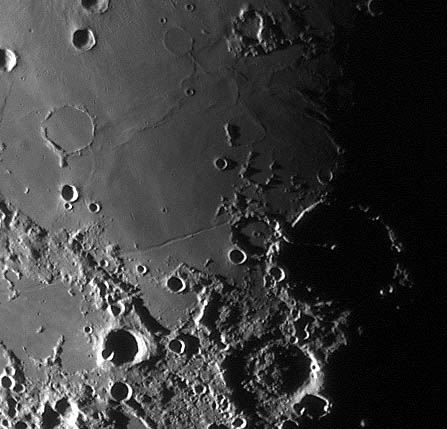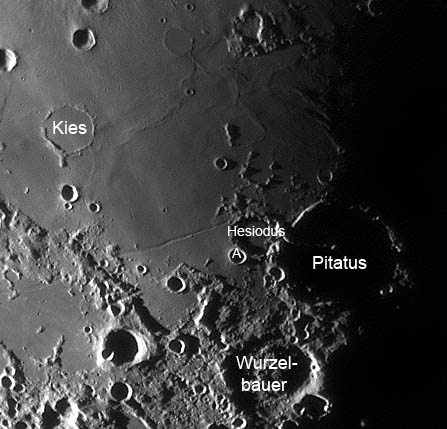Difference between revisions of "February 20, 2005"
| Line 54: | Line 54: | ||
</table> | </table> | ||
<p> </p> | <p> </p> | ||
| − | + | {{wiki/ArticleFooter}} | |
| − | |||
| − | |||
| − | |||
| − | |||
| − | |||
| − | |||
| − | |||
| − | |||
| − | |||
| − | |||
| − | |||
Revision as of 19:17, 1 February 2015
Scattered Impressions of a Boundary Zone
Image Credit: Alessandro Bares |
|
Scattered Impressions of a Boundary Zone Closeup views of individual features can provide details of their structure and hence clues to their origin and evolution. But wider perspectives of an entire mare basin or region are like a plate of appetizers – offering delectable morsels of a variety of flavors. Mare borders are especially interesting because they contrast the relatively young and smooth with the ancient and rough. Here at the southern shore of Mare Nubium there are many morsels to sample and ponder. The mare is thought to be relatively thin because of the numerous ghost craters and deeply flooded craters (like Kies) that barely emerge from it. Immediately west of Kies is the famous dome with it central pit just visible. The Hesiodus Rille crosses the bottom of Nubium, strangely passes through a narrow highland swath and continues into Palus Epidemiarum. With higher Sun the inner donut of Hesiodus A would be visible, but this image’s low sunset view reveals a delicate light bridge from a low spot in the western rim of Pitatus across to its central peak. The nearby highlands have a roughness due to churning by impact craters of various sizes and ages. An odd feature is the broad and bumpy elevated interior of Wurzelbauer (diameter 88 km) – it looks like confused ejecta from a basin but there is no reasonable source. Another smaller bump (I daren’t call it a dome) with rough texture occurs just to the north in a poorly defined region that could be a highly ruined crater. This little excursion has ranged over only about 400 km but included wonderful tastes of many different types of the lunar cuisine! Technical Details: Related Links: Yesterday's LPOD: Looking Across Orientale Tomorrow's LPOD: Its Just a Phase |
|
Author & Editor: Technical Consultant: Contact Translator: A service of: |
COMMENTS?
Register, Log in, and join in the comments.





